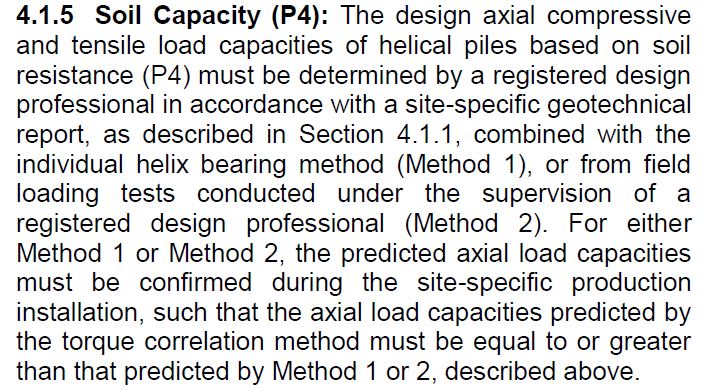AaronMcD
Structural
- Aug 20, 2010
- 273

I'm confused by this section. I'm told they install these all the time using torque correlation only, but this paragraph appears to require either calculations based on a geotech report or load tests. Is it permitted to EVER use torque correlation only? I'm working on a house with a site retaining wall, 7'-14' from base of foundation to finished grade. The contractor wants to use helical anchors to reduce the excavation - there is nowhere on the sloped site to put all that soil. They do not want to do load tests or new geotech borings in the vicinity. The geotech thinks the soil is good and there's no need for additional borings or load tests. They have done a few probe piles.
Secondly, the last sentence appears to make no sense to me. The way I read it, it is requiring all anchors to fail (installation torque correlation exceeding calculated or tested capacity). What is it really meaning to say?
Thanks.
